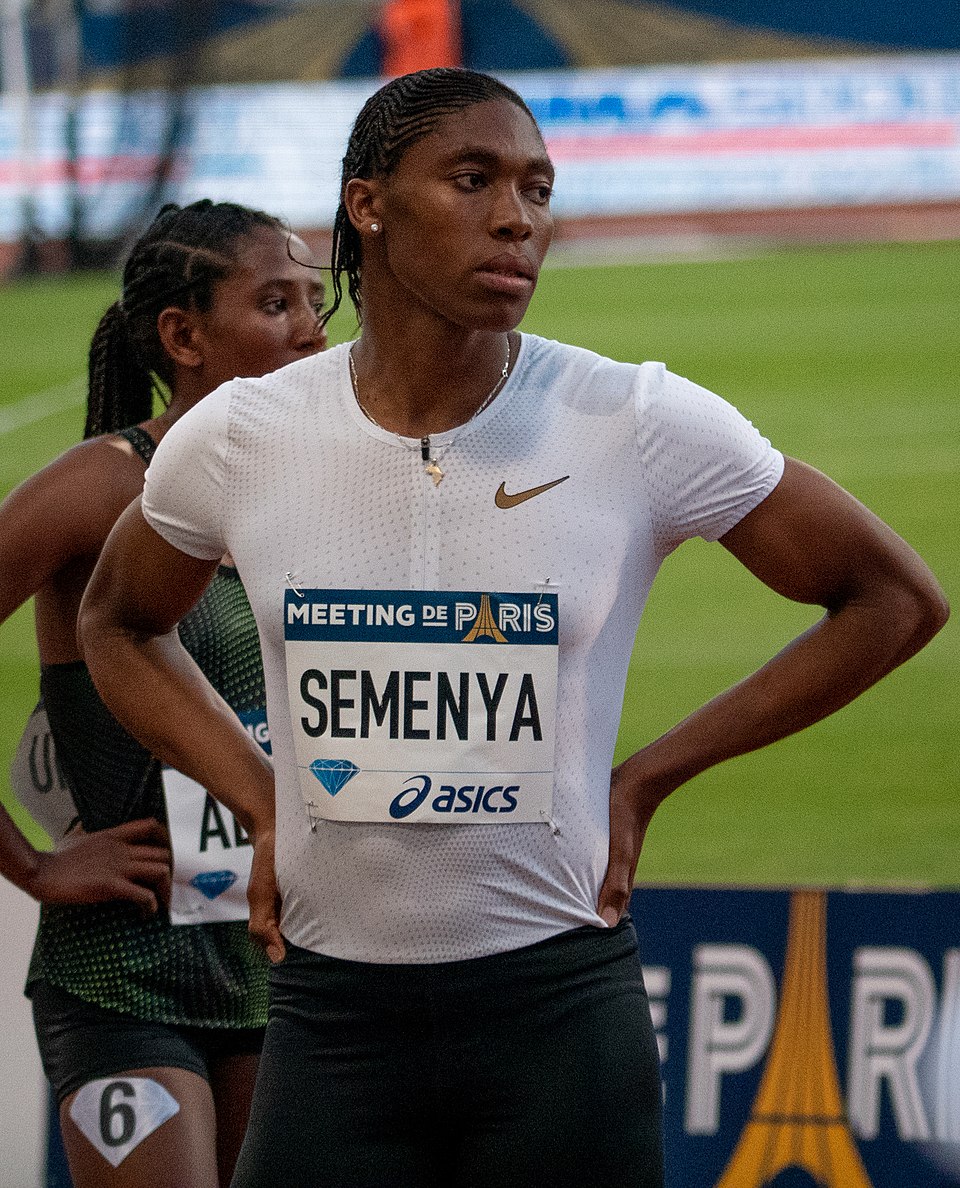Caster Semenya: Champion, Challenger, and Change-Maker
Caster Semenya stands as one of the most exceptional middle-distance runners in athletic history and simultaneously as a pivotal figure in the ongoing global conversation about gender, science, and human rights in sports. The South African champion’s journey from a rural village to Olympic gold has been marked by extraordinary athletic achievement and unprecedented scrutiny, creating a narrative that transcends sport to touch on fundamental questions of identity, fairness, and dignity. At 33, Semenya’s legacy encompasses both her dominance on the track and her resolute advocacy in courtrooms and public discourse.
Early Life and Athletic Beginnings
Born on January 7, 1991, in Ga-Masehlong, a small village near Polokwane in South Africa’s northern Limpopo province, Mokgadi Caster Semenya grew up in an environment far removed from the international spotlight she would later inhabit. Raised in modest circumstances, she displayed natural athletic ability from an early age, participating in soccer and various track events during her school years.
The rural setting of Semenya’s childhood, with limited facilities and coaching, makes her eventual rise to athletic prominence all the more remarkable. Her early training often consisted of running along dusty roads and makeshift tracks, developing the raw power and endurance that would later distinguish her on the world stage.
“I learned to run in the bush,” Semenya once recalled. “No special tracks, no special shoes—just me running because I loved the feeling of moving fast, of testing my body to see how strong it could be.”
Her formal introduction to organized athletics came during her teenage years at Nthema Secondary School, where coaches recognized her exceptional potential, particularly in middle-distance events. Despite limited resources, Semenya’s natural talent was undeniable, and she began to participate in regional competitions with increasing success.
By age 17, Semenya had progressed to competing at the national level, capturing attention with performances that suggested world-class potential. Her times in the 800 meters continued to improve at a rate that indicated she might soon be ready for international competition, setting the stage for what would become one of the most meteoric—and controversial—rises in track and field history.
This period of development coincided with Semenya’s growing academic interests in sports science. Her pursuit of education alongside athletic training reflected an understanding that knowledge of physiology, training methods, and sports psychology could complement her natural abilities—a holistic approach to athletic development that would serve her well throughout her career.
International Emergence and Immediate Controversy
Caster Semenya’s international debut came in 2008 at the Commonwealth Youth Games in Pune, India, where she won gold in both the 800m and 1500m events. While this success generated some attention within track circles, it was her performance at the 2009 African Junior Championships that truly announced her arrival on the elite stage. There, she won the 800m in 1:56.72, an extraordinary time for an 18-year-old that immediately placed her among the world’s best in the event.
This rapid improvement caught the attention of both admirers and skeptics within the athletics community. When Semenya arrived at the 2009 World Championships in Berlin as a relatively unknown teenager and proceeded to dominate the women’s 800m—winning gold with a time of 1:55.45, nearly two and a half seconds ahead of the silver medalist—her performance generated both awe and questions.
What should have been a triumphant moment of athletic breakthrough became instead the beginning of an unprecedented public ordeal. Hours before the final, news broke that the International Association of Athletics Federations (IAAF, now World Athletics) had requested Semenya undergo sex verification testing, ostensibly due to her dramatic improvement and physical appearance.
The handling of this situation by sporting authorities and media drew widespread criticism. The tests were supposed to be confidential, yet became a matter of public speculation. South African officials, including then-Minister of Sport Makhenkesi Stofile, condemned the IAAF’s approach as invasive and culturally insensitive. “It is a very simple issue of human rights,” he stated. “The humiliation of a person is not a right.”
Reports eventually emerged suggesting that Semenya has differences of sexual development (DSD), specifically hyperandrogenism, a condition that can result in naturally higher testosterone levels than typical in women. This deeply private medical information became the subject of global headlines and often uninformed discussion, transforming an 18-year-old athlete’s moment of triumph into an ordeal of scrutiny and judgment.
The psychological impact on Semenya was profound. She was temporarily prevented from competing while investigations continued, losing nearly a year of her career at what should have been its celebratory beginning. “I have been subjected to unwarranted and invasive scrutiny of the most intimate and private details of my being,” she later stated in court documents.
Despite this traumatic introduction to international athletics, Semenya displayed remarkable resilience. When eventually cleared to compete again in July 2010, she returned to the track with dignity intact, refusing to be defined by controversy rather than achievement.
Olympic Glory and Continued Excellence
Following her reinstatement, Semenya focused intently on preparing for the 2012 London Olympics. Despite the psychological burden of ongoing public discourse about her eligibility, she qualified for the South African team and arrived in London with renewed determination.
In the Olympic final, Semenya employed strategic restraint, staying with the pack before unleashing her trademark finishing kick in the final stretch to secure the silver medal with a time of 1:57.23. This performance, while impressive, came in a race where Russian athlete Mariya Savinova took gold—only to have it stripped years later due to doping violations. Consequently, Semenya was eventually awarded the gold medal, though years after the moment itself had passed.
Between the London and Rio Olympics, Semenya continued to compete at an elite level while also furthering her education. She enrolled at the University of Pretoria to study sports science, balancing academic pursuits with the demands of professional athletics. This period saw her working with new coaches and refining her racing strategy while managing the ongoing scrutiny that followed her career.
The 2016 Rio Olympics provided Semenya with an opportunity to claim Olympic gold in real-time. In a masterful display of tactical awareness and physical dominance, she won the 800m in 1:55.28, a personal best and national record. Her victory was emphatic, showcasing both her superior speed and strategic intelligence.
This Olympic cycle also saw Semenya expanding her event range, competing successfully in the 400m and 1500m alongside her specialty 800m. At the 2017 World Championships in London, she claimed bronze in the 1500m before winning gold in the 800m, demonstrating versatility rarely seen among middle-distance specialists.
Throughout this period of athletic success, Semenya maintained a dignified public presence, largely refusing to engage with the ongoing speculation about her biology. When asked about controversies, she consistently redirected focus to her work ethic, preparation, and love of competition.
“I focus on enjoying my sport,” she told reporters after her Rio victory. “I work hard every day. That’s the only thing I care about—training hard and going on the track and delivering.”
Regulatory Challenges and Legal Battles
The 2018 announcement of new World Athletics regulations regarding athletes with differences of sexual development marked the beginning of Semenya’s most public battle with sporting authorities. These rules required women with naturally high testosterone levels to medically reduce them below a specified threshold to compete in events between 400m and the mile—effectively targeting Semenya’s primary events.
Rather than accept these regulations or modify her body through medication, Semenya chose to challenge the rules through legal channels. She filed an appeal with the Court of Arbitration for Sport (CAS), arguing that the regulations were discriminatory, lacking scientific foundation, and violated her human rights.
“I am a woman and I am a world-class athlete,” she stated. “The IAAF will not drug me or stop me from being who I am.”
The ensuing legal battle expanded far beyond sports, drawing input from medical experts, ethicists, human rights organizations, and governments. South Africa’s parliament unanimously adopted a resolution supporting Semenya, while the United Nations Human Rights Council passed a resolution criticizing the regulations as potentially violating “international human rights norms and standards.”
In May 2019, CAS ruled 2-1 against Semenya’s appeal, while acknowledging the regulations were “discriminatory” but deeming them “necessary, reasonable and proportionate” to maintain fairness in women’s athletics. This decision was met with widespread criticism from human rights organizations and medical ethicists, who questioned both the scientific basis for testosterone limits and the ethics of requiring medical intervention for natural biological variations.
Undeterred, Semenya continued her legal fight, appealing to the Swiss Federal Tribunal and later the European Court of Human Rights (ECHR). In July 2023, the ECHR ruled in Semenya’s favor, finding that Switzerland had failed to protect her human rights by upholding the CAS decision. While this ruling did not immediately overturn the sporting regulations, it represented a significant victory in the ongoing debate about athletes’ rights and bodily autonomy.
Throughout these legal battles, Semenya adapted her competitive focus, shifting to events outside the restricted range—particularly the 200m and 5000m—while continuing to train at an elite level. This flexibility demonstrated both her exceptional athletic versatility and her determination to remain an active competitor despite institutional barriers.
Personal Life and Advocacy
Away from the track and courtroom, Caster Semenya has built a life characterized by the same strength and authenticity that defines her athletic career. In December 2015, she married her longtime partner Violet Raseboya in a traditional ceremony, followed by a white wedding in January 2017. Their relationship, which began in 2007, has provided a foundation of stability amid the public challenges Semenya has faced.
In 2019, the couple welcomed their daughter Oratile, with Semenya embracing motherhood while continuing her athletic career. “Starting a family has been a blessing,” she shared on social media. “It gives me a different kind of strength and purpose.”
Beyond her immediate family, Semenya maintains close ties to her rural roots and the community that supported her early development. She has established the Caster Semenya Foundation, which focuses on developing sports infrastructure in rural South Africa and providing opportunities for young athletes who, like herself, might otherwise lack access to proper facilities and coaching.
Her advocacy extends beyond formal charitable work to include speaking engagements and public statements supporting LGBTQ+ rights, women in sports, and athletes from disadvantaged backgrounds. While initially reluctant to become a spokesperson for causes beyond her athletic pursuits, Semenya has gradually embraced her position as a voice for those facing discrimination or barriers to participation in sports.
“I never wanted to be a symbol or an icon,” she noted in a rare extended interview. “I just wanted to run. But I’ve come to understand that sometimes your journey is bigger than your plans for it.”
This philosophical perspective has informed Semenya’s approach to both the acclaim and criticism she has received throughout her career. Rather than being defined by others’ perceptions, she has consistently emphasized her self-determination and right to compete as she is.
“I am who I am,” she stated simply after one court decision. “I cannot change who I am.”
Athletic Legacy and Cultural Impact
Assessing Caster Semenya’s athletic legacy requires separating the extraordinary achievements from the controversies that have often overshadowed them. By objective measures, her accomplishments place her among the greatest 800m runners in history: two Olympic gold medals, three World Championship titles, and a career that has spanned more than a decade at the elite level.
Her racing style—characterized by tactical patience and an unmatched finishing kick—revolutionized women’s middle-distance events, forcing competitors to develop new strategies to counter her powerful final lap. Coaches and analysts have studied her combination of speed endurance and pure power, recognizing a rare athletic talent irrespective of any physiological debates.
“What makes Semenya exceptional isn’t just physical gifts,” noted legendary American coach Brooks Johnson. “It’s her racing intelligence, her ability to make perfect decisions under pressure, and her competitive temperament. Those qualities transcend any discussion about biology.”
Beyond her medal count and times, Semenya’s impact on athletics extends to how she has expanded the conversation around sport itself. Through her challenges to governing bodies, she has forced a reconsideration of how sports categorize athletes and what constitutes “natural” advantage—questions that intersect with broader societal discussions about gender, science, and human rights.
The policies developed in response to Semenya’s case have implications that reach far beyond her individual career, potentially affecting numerous athletes with various differences of sexual development. By standing firm against regulations she views as discriminatory, Semenya has elevated these issues from obscure sporting policies to matters of international human rights discourse.
Sports sociologists and ethicists have increasingly cited the Semenya case as a pivotal moment in the evolution of gender policies in athletics. “What began as a controversy about one remarkable athlete has developed into a fundamental questioning of how we organize sports and what values we prioritize,” wrote bioethicist Katrina Karkazis. “Fairness, inclusion, science, and human dignity are all at stake.”
Within South Africa, Semenya holds iconic status that transcends sports, embodying resilience in the face of international scrutiny and standing as a symbol of national pride. Government officials, celebrities, and ordinary citizens have rallied behind her throughout her challenges, viewing her treatment by international sporting bodies through the lens of the country’s historical experiences with discrimination.
For many young African athletes, particularly those from rural backgrounds, Semenya represents the possibility of reaching the highest levels of sport despite limited resources and systemic barriers. Her journey from village races to Olympic gold provides inspiration while her advocacy creates hope for a more inclusive sporting future.
Current Activities and Future Prospects
At 33, Caster Semenya continues to train and compete, though the restrictions on her preferred events have necessarily altered the trajectory of her athletic career. Her focus has shifted to distances outside the regulated range, demonstrating remarkable adaptability while continuing to challenge the regulations through legal channels.
Beyond competition, Semenya has begun exploring opportunities in coaching and sport development, particularly focused on identifying and nurturing talent in underserved communities. Her experience navigating both athletic excellence and institutional barriers provides a unique perspective that could benefit the next generation of runners.
Her foundation’s work continues to expand, with projects aimed at developing infrastructure and providing both athletic and educational opportunities for young South Africans. This philanthropic dimension reflects Semenya’s understanding that her impact can extend beyond personal achievement to systemic change.
In media and public life, Semenya has become increasingly comfortable sharing her perspective, though she maintains careful boundaries around her privacy and family life. Her 2022 autobiography, “The Race to Be Myself,” offered her most comprehensive public statement on her experiences, presenting her story in her own words after years of having it defined by others.
Looking forward, Semenya’s influence on athletics seems likely to grow rather than diminish, regardless of how her competitive career evolves. The precedents established through her legal challenges will shape sporting policies for decades to come, while her advocacy for athletes’ rights could influence governance structures within international federations.
Conclusion: Dignity in the Face of Unprecedented Challenge
Few athletes in modern history have faced the level of scrutiny, judgment, and institutional resistance that Caster Semenya has encountered throughout her career. What distinguishes her story is not just the uniqueness of these challenges but the extraordinary dignity and resolve with which she has faced them.
From the moment when her most significant athletic breakthrough became coupled with invasive questioning of her very identity, Semenya has maintained a steadfast focus on her right to compete as she is. Neither vilifying her critics nor allowing herself to be victimized by circumstances, she has instead methodically pursued both athletic excellence and justice through appropriate channels.
“I am Caster Semenya. I am a woman and I am fast,” she stated with characteristic directness after one court decision. This simple assertion encapsulates the essence of her stance—an insistence on self-definition and the right to pursue her talents without unnecessary modification.
The ultimate resolution of the regulatory issues surrounding Semenya’s eligibility remains uncertain, with ongoing legal challenges and evolving scientific understanding potentially reshaping policies in coming years. What seems certain, however, is that her impact will extend far beyond her competition records or medal count.
By standing firm in her identity while excelling at the highest levels of sport, Caster Semenya has forced a global reconsideration of the intersection between biology, gender, fairness, and human rights. This contribution to both athletic and broader social discourse may ultimately constitute her most significant legacy—a champion whose greatest victory lies not in races won but in boundaries challenged and conversations transformed.
As both an athlete of rare talent and an advocate of uncommon courage, Caster Semenya has written a chapter in sports history that defies conventional narratives. In doing so, she has created space for future athletes who may not fit neatly into traditional categories to pursue their talents with dignity, determination, and the fundamental right to compete as themselves.








